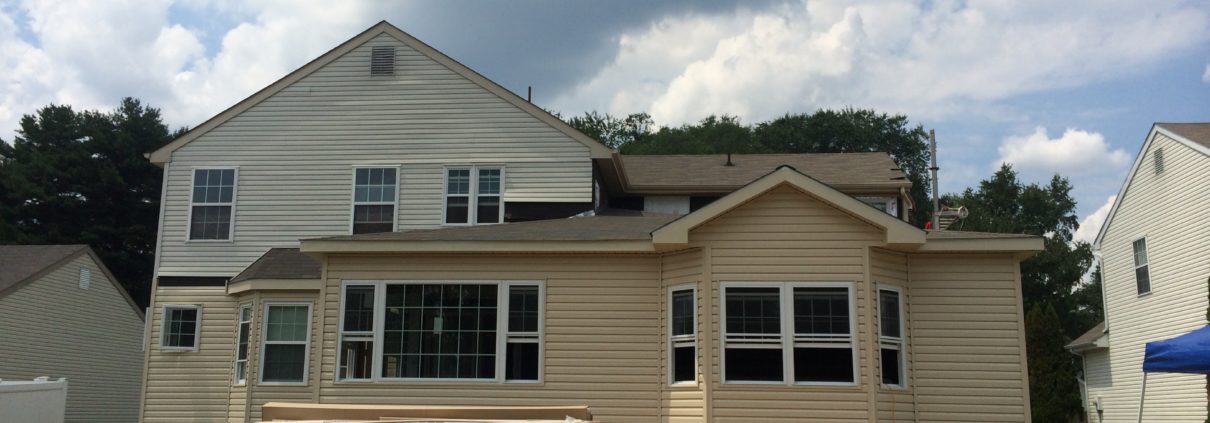7 Tips on Building a Mother-in-Law Suite
In recent years, we’ve seen a nagging curiosity for so-called “mother-in-law suites” (aka “in-law suites” or “granny pods”) — apartment-like spaces equipped with all the amenities an aging parent may need to live independently, but located on the same property. Whether related by blood or related by marriage, our moms and dads deserve to be celebrated beyond a single holiday — in-law suites give homeowners the opportunity to do just that.
Mother-in-law suites can be whatever you need them to be. Bed and bath additions to a home, converted rooms, free-standing apartments (this is what is most often meant by “granny pod”), or in-home suites. What they all have in common is their preferred locations on the ground level for accessibility and their added sales appeal (depending on the kind of addition, in-law suites can increase property values up to 60%). The additional space need not necessarily house parents full-time — it can be purposed as an office, living space for recuperating relatives, or serve as a guest bedroom until you yourself no longer wish to tackle the stairs.
Multigenerational housing is increasing yearly, and professionals agree: it’s best to start thinking of the future of your parents and in-laws (even your own) now, rather than when it becomes a matter of urgency. They’re perfect for living situations between relatives who want to keep their privacy and save some independence while also feeling included with the rest of the household. If creating these mother-in-law additions seems to be in your future, then consider these seven tips before you build.
- Check Building Area Codes
Before you begin, check with your city on building area codes because this can limit what you can do with your addition. Most zoning rules limit additions to having a bedroom, bath, sitting area, and kitchenette. You can get around the kitchen problem by installing a wet bar or making sure the addition has access to the communal kitchen. Adding a kitchen or creating a free-standing unit makes it an ADU (affordable dwelling unit) which is considered rentable — this makes your home no longer a single-family home and requires separate permits.
- Check Your Septic Permit
You probably rarely think about it, but if you have a septic tank, you also have a permit for it. Most of us aren’t well-versed in plumbing rules because we don’t have to be, but here’s one to be aware of before building an in-law suite — many septic tanks only allow for three bathroom connections. There’s a chance you may have to increase the size of your system to allow for an addition with a bath, which means increased costs to prepare for.
- Choose a Location
Once you have the type of space you want to build in mind, it’s time to look around your home for the best place to build or convert. Permits permitting, you can transform your garage or porch area to an enclosed dwelling. If you’re looking to create a new addition to your house, look for an area along the first floor next to a room you’ve underutilized, preferably a space near an existing bathroom. If you convert existing rooms, consider combining two rooms to make a suite, such as formal dining and living areas you use only for guests, etc. They can be great candidates for housing more permanent guests.
- Separate Power
It’s a good idea to keep your addition on its own separate power, heat, and A/C source. It will help in the future should you decide to charge an occupant rent, but more importantly, you can shut the unit down when it’s not being lived in.
- Keep Occupants in Mind
When laying out the blueprints for your addition and choosing what kind of addition to create, keep the ones who will be living there in mind. Will they need wider doors and hallways? Assisted baths with lever handles and stylish guardrails? Non-slip flooring and no-curb showers? Even if your parents or in-laws are physically active now, they may need help from time to time in the future. This also goes for how much privacy and independence they desire. If you want to spend a lot of time together, maybe you can forgo a kitchen or sitting area and share the communal ones. Or maybe they would prefer an entirely separate living arrangement. It’s up to your family.
- Keep Others in Mind
If your relatives aren’t planning to move in permanently or they won’t move in for a while, it’s important to keep everyone in mind with the décor of your addition. Keeping things neutral, from flooring to curtains to wall color, will allow whoever lives there to add their personal touches on top of this basic groundwork.
- Enjoy Your Family
Having a parent move in with you may seem daunting at first, but many families who are interviewed say it’s been a blessing and many wish they’d done it sooner. Sure there are the logistical benefits of cut care costs, but the biggest benefit is spending more time with your entire family and taking care of those who once took care of you.
After you’ve had a chance to discuss building a mother-in-law suite with your family, do not hesitate to discuss with our family to make it a reality.




